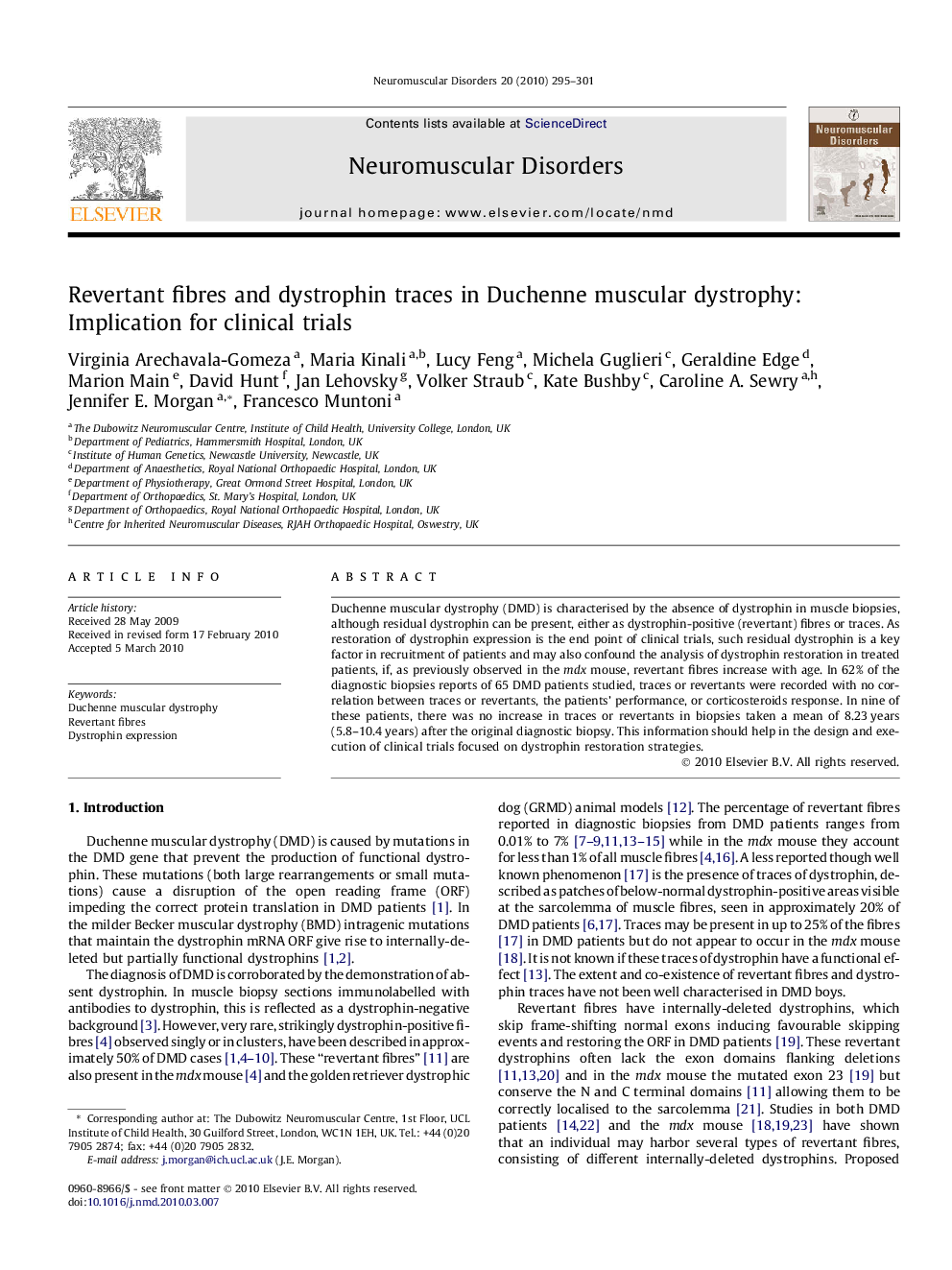| Article ID | Journal | Published Year | Pages | File Type |
|---|---|---|---|---|
| 3080966 | Neuromuscular Disorders | 2010 | 7 Pages |
Abstract
Duchenne muscular dystrophy (DMD) is characterised by the absence of dystrophin in muscle biopsies, although residual dystrophin can be present, either as dystrophin-positive (revertant) fibres or traces. As restoration of dystrophin expression is the end point of clinical trials, such residual dystrophin is a key factor in recruitment of patients and may also confound the analysis of dystrophin restoration in treated patients, if, as previously observed in the mdx mouse, revertant fibres increase with age. In 62% of the diagnostic biopsies reports of 65 DMD patients studied, traces or revertants were recorded with no correlation between traces or revertants, the patients' performance, or corticosteroids response. In nine of these patients, there was no increase in traces or revertants in biopsies taken a mean of 8.23Â years (5.8-10.4Â years) after the original diagnostic biopsy. This information should help in the design and execution of clinical trials focused on dystrophin restoration strategies.
Keywords
Related Topics
Life Sciences
Neuroscience
Developmental Neuroscience
Authors
Virginia Arechavala-Gomeza, Maria Kinali, Lucy Feng, Michela Guglieri, Geraldine Edge, Marion Main, David Hunt, Jan Lehovsky, Volker Straub, Kate Bushby, Caroline A. Sewry, Jennifer E. Morgan, Francesco Muntoni,
